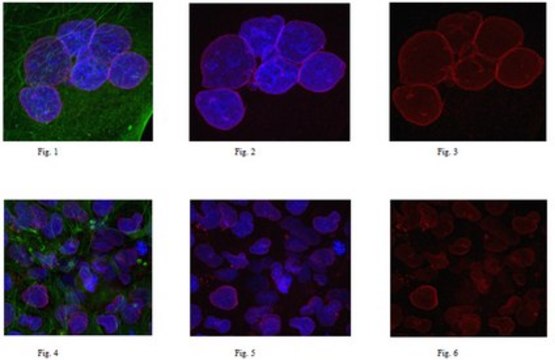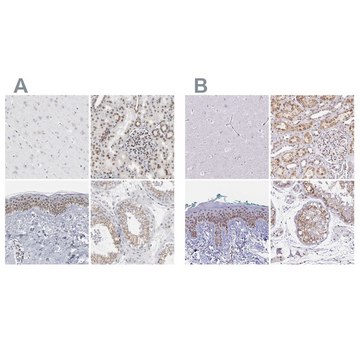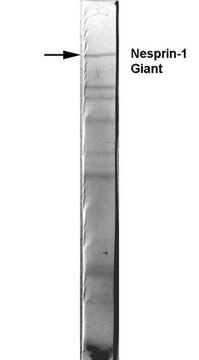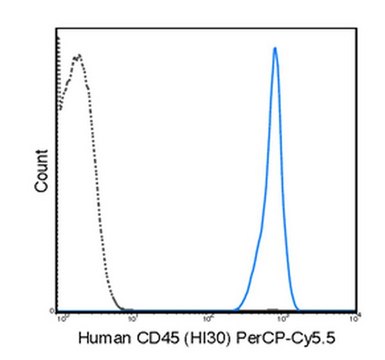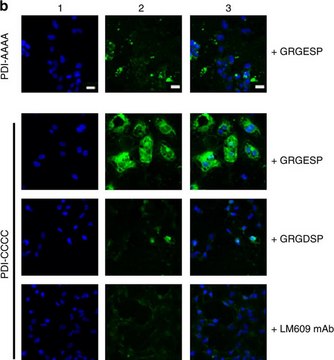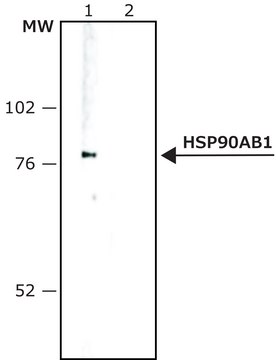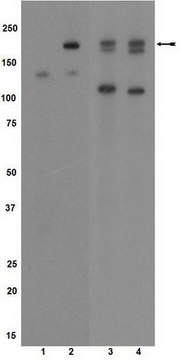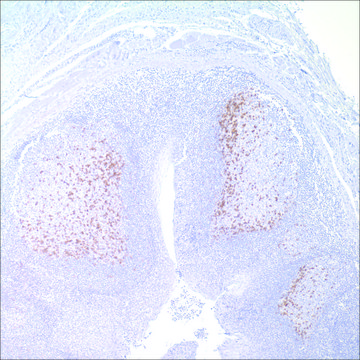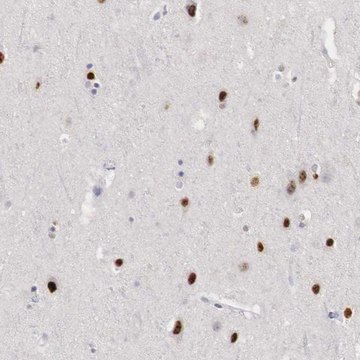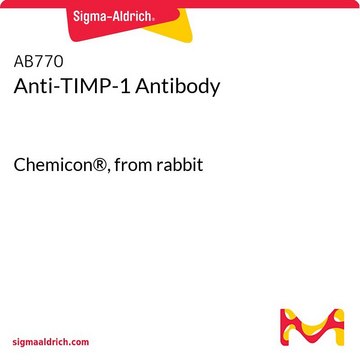MABN857
Anti-SYNE1 Antibody, clone 200A6
clone 200A6, from mouse
Synonym(s):
CPG2, Enaptin, Enaptin-165, Nesprin-1 Giant, Syne-1B
About This Item
Recommended Products
biological source
mouse
Quality Level
antibody form
purified immunoglobulin
antibody product type
primary antibodies
clone
200A6, monoclonal
species reactivity
rat
species reactivity (predicted by homology)
mouse (based on 100% sequence homology)
technique(s)
electron microscopy: suitable
immunocytochemistry: suitable
western blot: suitable
isotype
IgG1κ
GenBank accession no.
NCBI accession no.
shipped in
ambient
target post-translational modification
unmodified
Gene Information
mouse ... Syne1(64009)
General description
Specificity
Immunogen
Application
Electron Microscopy Analysis: A representative lot localized SYNE1 isoform CPG2 immunoreactivity colocalized with clathrin in the postsynaptic endocytic zone by immunoEM labeling of 60 nm thick serial sections of 4% paraformaldehyde-/0.1% glutaraldehyde-fixed rat neurons (Cottrell, J.R., et al. (2004). Neuron. 44(4):677-690).
Immunocytochemistry Analysis: A representative lot immunolocalized SYNE1 spliced isoform CPG2 on the dendritic spines, colocalized with clathrin, but segregated from the PSD and actin filaments in the spine head, by fluorescent immunocytochemistry staining of 4% formaldehyde-fixed, 0.3% Triton X-100-permeabilized rat hippocampal neurons. Target staining was greatly diminished among neurons received cellular CPG2 shRNA delivery (Cottrell, J.R., et al. (2004). Neuron. 44(4):677-690).
Western Blotting Analysis: A representative lot detected SYNE1 spliced isoform CPG2 as a ~110 kDa boublet band in rat cerebral cortex tissue extract and lysate from isolated rat cortical neurons. Target band detection was greatly diminished when using lysate from neurons following cellular CPG2 shRNA delivery (Cottrell, J.R., et al. (2004). Neuron. 44(4):677-690).
Neuroscience
Quality
Western Blotting Analysis: 4 µg/mL of this antibody detected the ~110 kDa SYNE1 spliced isoform CPG2 in 10 µg of rat hippocampus tissue lysate.
Target description
Physical form
Storage and Stability
Other Notes
Legal Information
Disclaimer
Not finding the right product?
Try our Product Selector Tool.
Storage Class Code
12 - Non Combustible Liquids
WGK
WGK 1
Flash Point(F)
Not applicable
Flash Point(C)
Not applicable
Regulatory Information
Certificates of Analysis (COA)
Search for Certificates of Analysis (COA) by entering the products Lot/Batch Number. Lot and Batch Numbers can be found on a product’s label following the words ‘Lot’ or ‘Batch’.
Already Own This Product?
Find documentation for the products that you have recently purchased in the Document Library.
Our team of scientists has experience in all areas of research including Life Science, Material Science, Chemical Synthesis, Chromatography, Analytical and many others.
Contact Technical Service